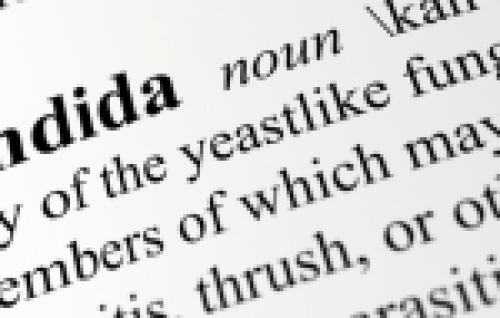Candida Treatment and Prevention

Article Summary
Candida albicans is a yeast that normally lives in the human gut, but it can cause problems when it grows too much. Factors like antibiotics, stress, high sugar diets, and hormonal changes can lead to this overgrowth. Symptoms include bloating, gas, fatigue, brain fog, and recurrent infections. To properly address Candida overgrowth, it’s important to recognize these symptoms and get tested, as other issues like bacterial overgrowth or food sensitivities might also be involved.
Probiotics and antifungal supplements are key tools for managing Candida. Probiotics like Lactobacillus and Bifidobacterium help balance gut bacteria, while Saccharomyces boulardii, a beneficial yeast, fights Candida directly. Natural antifungals such as oregano oil and garlic extract can also help. In addition, a low-sugar, low-carb diet is crucial since Candida thrives on sugar. Including probiotic-rich foods like yogurt and anti-inflammatory foods such as leafy greens can further support gut health.
Treating Candida overgrowth takes time, with results varying from a few weeks to longer. Regular testing helps ensure the treatment is working and guides next steps. Along with supplements and diet, consulting a health professional can provide personalized advice. By tackling Candida with a clear plan, people can restore gut balance and improve overall health.
Want to know more details?
Check out the full article below.
Candida albicans is a type of yeast that naturally resides in the human gut. However, when its population grows uncontrollably, it can lead to Candida overgrowth, causing various health issues. Let’s discuss the causes, symptoms, and effective strategies for managing Candida overgrowth, including supplements, dietary suggestions, treatment duration, and the crucial importance of testing.
Causes of Candida Albicans Overgrowth
Several factors can contribute to the dysbiosis caused by theovergrowth of Candida albicans in the gut. These include prolonged antibiotic use, a weakened immune system, high sugar and refined carbohydrate intake, hormonal changes (such as during pregnancy or the use of birth control pills), and chronic stress. Understanding these factors is crucial for effective prevention and treatment.
Symptoms of Candida Overgrowth
Candida overgrowth can manifest in various symptoms, ranging from digestive issues like bloating and gas to more systemic problems such as fatigue, brain fog, and recurrent infections. Identifying these symptoms is the first step in addressing Candida overgrowth. (Remember that other causes such as Small Intestinal Bacterial Overgrowth or mold in the body can also cause these issues so get tested for all of them if your budget allows. It is absolutely possible to have multiple causes at the same time.)
Supplements to Combat Candida Overgrowth
Probiotics
Candida overgrowth, particularly of Candida albicans, can lead to a range of health issues including thrush, yeast infections, and systemic candidiasis. To combat this, many individuals turn to probiotics—live microorganisms that, when administered in adequate amounts, confer health benefits to the host. Probiotics can help restore the balance of good bacteria in the gut and other parts of the body, which is crucial for controlling the overgrowth of Candida.
The most commonly used probiotics for addressing Candida overgrowth include various strains of Lactobacillus and Bifidobacterium. Lactobacillus acidophilus, for example, produces lactic acid which lowers the pH of the gut, creating an environment less conducive to Candida proliferation. This strain, along with others like Lactobacillus rhamnosus and Lactobacillus reuteri, can inhibit Candida growth by competing for nutrients and adhesion sites on the mucosal surfaces of the intestines.
Bifidobacterium strains, such as Bifidobacterium bifidum and Bifidobacterium longum, also play a vital role in maintaining gut health. They produce acetic and lactic acids which lower the intestinal pH and suppress the growth of pathogenic organisms, including Candida. Additionally, these probiotics help enhance the immune response, aiding the body in fighting off infections.
Another beneficial probiotic is Saccharomyces boulardii, a non-pathogenic yeast that has shown efficacy in reducing Candida overgrowth. Unlike bacterial probiotics, S. boulardii can directly compete with Candida for resources and space, and it produces substances that inhibit Candida adherence to the gut lining. It also enhances the immune system’s ability to clear Candida infections.
Incorporating these probiotics into one’s diet can be achieved through supplements or fermented foods such as yogurt, kefir, sauerkraut, and kimchi. Regular intake of these probiotics can help maintain a balanced gut microbiome, reduce the incidence of Candida overgrowth, and promote overall health.
Antifungal Supplements
Natural antifungal agents like oregano oil, garlic extract, and grapefruit seed extract have shown promise in combating Candida overgrowth. These supplements can be effective in controlling yeast populations.
Caprylic Acid
Derived from coconut oil, caprylic acid has antifungal properties that can be beneficial in reducing Candida overgrowth.
Digestive Enzymes
Supplementing with digestive enzymes can enhance the breakdown of food and improve nutrient absorption, creating an environment less conducive to Candida growth.
Dietary Suggestions to Combat Candida Overgrowth
Low Sugar and Carbohydrate Diet
Candida thrives on sugar and refined carbohydrates. Adopting a low-sugar and low-carb diet can starve the yeast and limit its growth.
Anti-Inflammatory Foods
Including anti-inflammatory foods in the diet, such as fatty fish, leafy greens, and turmeric, can support the body’s overall immune function and reduce inflammation. This is, of course, assuming that you do not have an allergy or sensitivity to these foods, which would cause the opposite reaction.
Probiotic-Rich Foods
Incorporating fermented foods like yogurt, sauerkraut, and kefir can introduce beneficial bacteria into the gut, promoting a healthy microbiome.
Duration of Treatment
The duration of Candida overgrowth treatment varies based on the severity of the condition and individual responses to interventions. While some individuals may experience relief within a few weeks, others may require more extended treatment periods. Consistency in following a tailored treatment plan is key to success.
Importance of Testing
Testing is crucial to verify the effectiveness of the treatment and ensure that Candida overgrowth has been adequately addressed. Stool tests, blood tests, and comprehensive health assessments can provide valuable insights into the current state of gut health and guide further steps in the recovery process. If your testing turns up negative for candida overgrowth, consider testing for SIBO, h. pylori, an IgG food sensitivity test, or even doing a lectin or histamine elimination diet to see if these other causes may be to blame.
Candida albicans overgrowth in the gut is a complex condition that requires a multifaceted approach for effective management. Individuals can take proactive steps toward restoring gut health and overall well-being by understanding the causes, recognizing symptoms, incorporating supplements and dietary changes, following a suitable treatment duration, and prioritizing testing. An Integrative Health Practitioner can help take you through the steps of identifying a candida overgrowth as well as what to do to bring your gut back into balance.
References
-
Borchers, Andrea T., et al. “Probiotics and Immunity.” Journal of Gastroenterology, vol. 44, no. 1, 2009, pp. 26-46. https://www.ncbi.nlm.nih.gov/pmc/articles/PMC2657254/.
-
McFarland, Lynne V. “Systematic Review and Meta-analysis of Saccharomyces boulardii in Adult Patients.” World Journal of Gastroenterology, vol. 16, no. 18, 2010, pp. 2202-2222. https://www.ncbi.nlm.nih.gov/pmc/articles/PMC2868210/.
-
Pappas, Peter G., et al. “Clinical Practice Guideline for the Management of Candidiasis: 2016 Update by the Infectious Diseases Society of America.” Clinical Infectious Diseases, vol. 62, no. 4, 2016, pp. e1-e50. https://academic.oup.com/cid/article/62/4/e1/2462830.
-
Calderone, Richard A., and William A. Fonzi. “Virulence Factors of Candida albicans.” Trends in Microbiology, vol. 9, no. 7, 2001, pp. 327-335. https://www.ncbi.nlm.nih.gov/pmc/articles/PMC89056/.
-
Vitetta, Luis, et al. “Probiotics, Prebiotics, and the Gastrointestinal Microbiome: Therapeutic Potential in Disease and Health.” Medicines, vol. 1, no. 1, 2014, pp. 90-99. https://www.ncbi.nlm.nih.gov/pmc/articles/PMC5690441/.
-
Gibson, Glenn R., et al. “Dietary Modulation of the Human Colonic Microbiota: Updating the Concept of Prebiotics.” Nutrition Research Reviews, vol. 17, no. 2, 2004, pp. 259-275. https://www.ncbi.nlm.nih.gov/pmc/articles/PMC4861220/.
-
Marik, Paul E., and Arjen M. Dellinger. “Antifungal Properties of Garlic.” Journal of Antimicrobial Chemotherapy, vol. 47, no. 4, 2001, pp. 399-402. https://academic.oup.com/jac/article/47/4/399/717021.
-
Calder, Philip C., et al. “Dietary Factors and Low-grade Inflammation in Relation to Overweight and Obesity.” British Journal of Nutrition, vol. 106, no. S3, 2011, pp. S5-S78. https://www.cambridge.org/core/journals/british-journal-of-nutrition/article/abs/dietary-factors-and-lowgrade-inflammation-in-relation-to-overweight-and-obesity/2F9A39BDE16E827970EF681EC65E2FF6.
-
Chai, Wei, et al. “The Protective Effects of Dietary Polyphenols Against Microbial Infections.” Molecules, vol. 25, no. 20, 2020, pp. 1-24. https://www.ncbi.nlm.nih.gov/pmc/articles/PMC7602668/.
-
Calder, Philip C. “Omega-3 Polyunsaturated Fatty Acids and Inflammatory Processes: Nutrition or Pharmacology?” British Journal of Clinical Pharmacology, vol. 75, no. 3, 2013, pp. 645-662. https://www.ncbi.nlm.nih.gov/pmc/articles/PMC3575935/.

